Top 10 best sake substitutes | Use these instead
When cooking Japanese food, many recipes call for a special type of fermented polished rice drink called sake. It has a distinct savory, nutty, with a light sweet flavor.
Sake is a Japanese alcoholic fermented rice drink that is served at pubs and bars called izakayas.
However, there is also a special type of cooking sake and that’s what Japanese chefs like to use.
The easiest substitute for cooking sake is obviously drinkable sake. Besides that, some other ingredients might work as well.
If you don’t have this drink at home either, what is the best substitute for sake you can use?

Fortunately, there are several great sake substitutes you can use to give the food a fairly similar flavor.
The best substitute for sake is Shao Xing Chinese rice wine or something easy to find like rice wine vinegar and white wine. These fermented drinks are similar to sake when it comes to flavor so they can be used as substitutes in most recipes.
There’s drinking sake and then there’s cooking sake. There’s also mirin which is often mistaken for sake but mirin and sake are NOT the same things at all!
In this post, I’m sharing all the best sake substitutes to have in your kitchen just in case.

Check out our new cookbook
Bitemybun's family recipes with complete meal planner and recipe guide.
Try it out for free with Kindle Unlimited:
Read for freeIn this post we'll cover:
What is sake?
Sake is a fermented rice-based Japanese wine. That means the bran has been removed from the rice, giving sake a water-like clarity in comparison to other rice wines, which are often darker.
In fact, sake has a light white and yellow color, similar to white grape juice or wine. It has an alcohol content between 15–22%.
Sake is served cold and warm, depending on personal preference.
Sake is made from polished rice, water, and a type of fungus called koji kin (Aspergillus oryzae).
Sake has a long history, extending back over two millennia, and has seen major changes since its inception.
Back in the day, people were treading the rice grains to remove the husks, as well as chewing and spitting out the rice to start fermentation.
It sounds quite gross but the enzymes in saliva began breaking down the starch into sugars, which were eventually turned into alcohol.
These were the old processes involved in making sake.
Nowadays sake is brewed in ceramic or steel vats and made in completely sanitary ways and facilities.
What does sake taste like?
Sake is similar to dry white wine. It really depends on the sake variety though since there are many types.
Also, there is a difference between cooking sake and drinking sake. Cooking sake is also called Ryorishi and it has the same alcohol content as regular sake but instead of being sweet, some salt is added.
Salty sake is better for most food recipes because the beverage is used to cook things like meat and stews where sweetness isn’t a priority.
Some sake varieties are fruity and taste similar to regular white wine. Some are more full-bodied and floral. But most sake has a savory taste with notes of nuttiness and mild sweetness.
It’s very similar to mild wine and the flavors dissipate after they are poured into a serving glass.
Top 10 sake substitutes
Alright, you want to make a dish that lists sake as an ingredient (like this delicious Yasai Itame Japanese stir-fry vegetables recipe), but you have no bottle of sake sitting in your pantry.
What to use instead?
Let me give you several great sake substitutes you can use to give the food a fairly similar flavor.
1. Shao Xing cooking wine: the best sake substitute
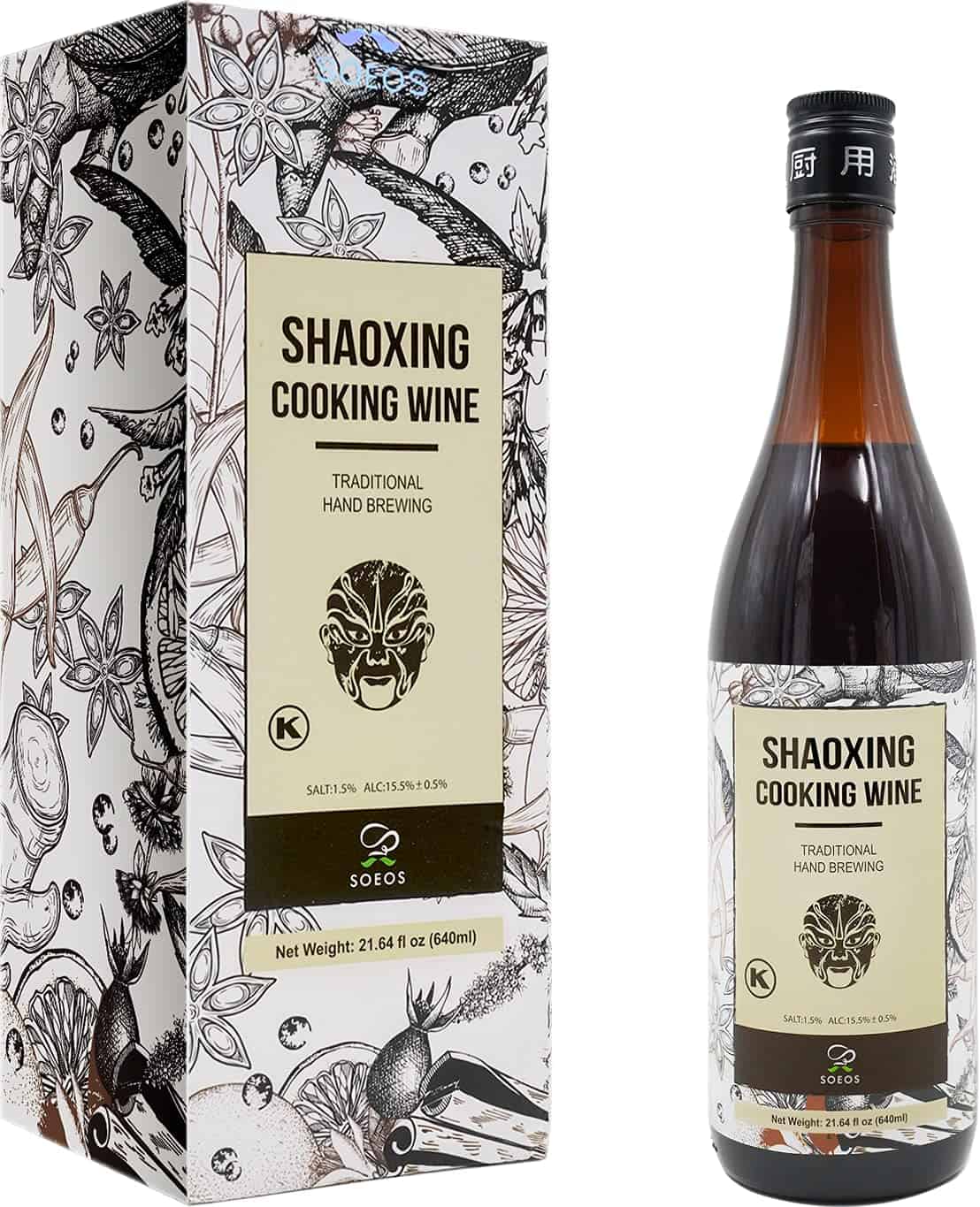
Since sake is basically a type of rice wine from Japan, the most obvious substitute is rice wine from other countries.
Shao Xing Chinese rice wine is my favorite substitute for sake. The flavor is very similar to sake so you can use it in all recipes as a suitable substitute.
It’s a great Chinese cooking wine and is commonly used in Chinese cooking worldwide.
Chinese yellow wine called Huangjiu is made from rice or millet. Shao Xing (or Shaoxing) wine, which hails from the prefecture of the same name, is one of the most widely available outside of China.
In essence, Shao Xing wine is Chinese sake, but there are some subtle differences that become apparent upon consumption.
To begin with, unlike sake, which is clear because it is made from polished rice, shochu is a brownish yellow color because the rice used isn’t polished. A small amount of salt is also present.
Overall, these minor differences don’t matter because the color is the biggest difference. The flavors are very similar.
But, if you’re making a pale-colored sauce or cooking for someone on a low-sodium diet, these differences are worth keeping in mind.
The Soeos Shaoxing Cooking Wine is traditionally hand-brewed and full of wine sake flavors.
Learn about the 3 main differences between Chinese Food vs Japanese Food here
2. Rice wine vinegar: best non-alcoholic sake substitute

Rice wine vinegar is one of the most common sake substitutes. But what makes it so special is that it’s the best non-alcoholic substitute for sake and it’s very affordable.
The good thing about rice wine vinegar is that its taste is very similar to sake even though there’s no alcohol in there. However, all the base flavors are similar because of the rice.
Both substances are very similar and the difference between them is as small as between white balsamic and white wine vinegar.
I would say that the taste of rice wine vinegar is stronger than that of sake when used in food so use a smaller quantity when substituting.
Also, since it’s a vinegar it’s sour and acidic with a flavor similar to apple cider vinegar.
But, rice wine vinegar is a healthy substitute and tastes great in all kinds of Japanese dishes.
The best method is to dilute the rice wine vinegar. Using 3 tablespoons of water with 1 tablespoon of rice wine vinegar (3:1 ratio) will give you the same results as using 1/4 of sake.
Try the Marukan Genuine Brewed Rice Vinegar which is sugar-free and sodium-free.
3. Dry sherry

If you haven’t heard of dry sherry you’re missing out. Cooking sherry is a great substitute for sake because it has a similar alcohol content.
Dry sherry refers to dry white grape wine which is has been fortified with alcohol. It is very similar to dry white wine but it has a stronger flavor.
Cooking sherry wine has a sweet flavor and a deep golden hue. It is just like the drinking sherry but it’s nuttier.
When using dry sherry for cooking, it’s hard to tell that you didn’t use sake.
Since sherry and sake have a similar alcohol content, they can be substituted for each other. However, there’s one color difference – the sherry has a deeper golden color like that of Shao Xing wine.
Be careful about using sweet sherry! Dry sherry is a good substitute for sake because it’s not very sweet. But the sweet sherry is not a good substitute for sake because the flavor profile is noticeably sweeter and can make your food taste too sweet.
The Holland House Cooking Wine Sherry is always a top seller because it has a pleasant slightly sweet taste.
4. Kombucha
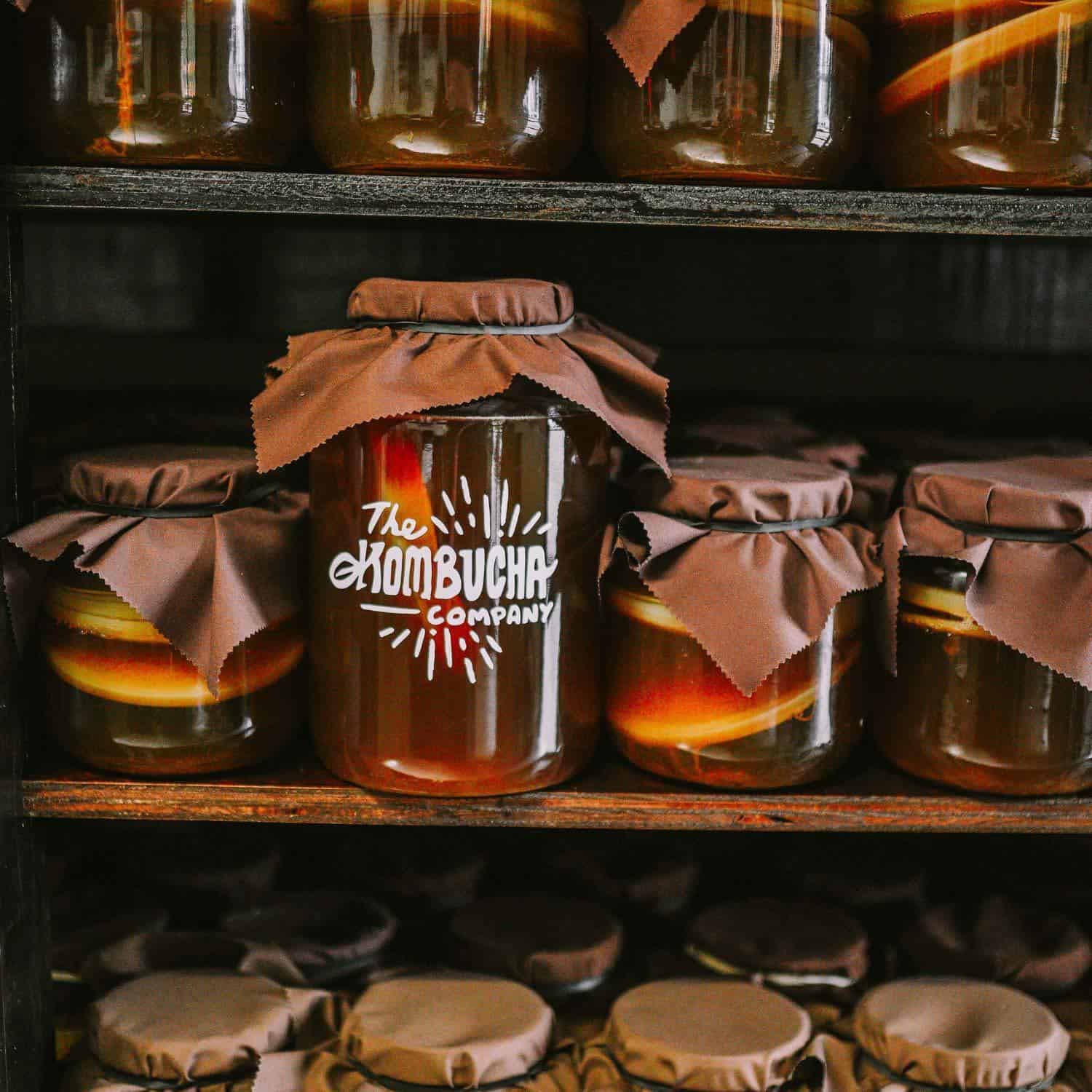
Have you heard about the health benefits of kombucha?
It is one of the best Asian fermented drinks and it is healthy for the body, especially the digestive system because it’s full of probiotics.
Using kombucha instead of sake can give your food a similar acidity, but without the strong alcoholic flavor.
Although some may see this as a positive, others may see it as a negative because some say food tastes better when it’s cooked in a bit of alcohol even though the alcohol evaporates.
Yeast and sugar are used to make kombucha, which is made from fermented black tea. It is left to ferment for about a week.
The acidity is enhanced by this method. There is a bit of alcohol in there.
The alcohol flavor, on the other hand, is not overpowering. Because of this, if sake doesn’t work for you, kombucha might be a better option.
Overall, using kombucha instead of sake will give you great results and a similar type of acidity in your dishes.
However, you should use unsweetened kombucha because the store-bought drink can be full of sugar. Search for the type of kombucha that doesn’t contain additional fruity aromas and flavorings.
The artificial flavorings can mess with your recipe and then it won’t be a suitable replacement for sake.
You can use a 1:1 ratio when substituting sake with kombucha.
Make your own kombucha at home without any fruity flavorings using The Kombucha Company Starter Tea.
5. Mirin
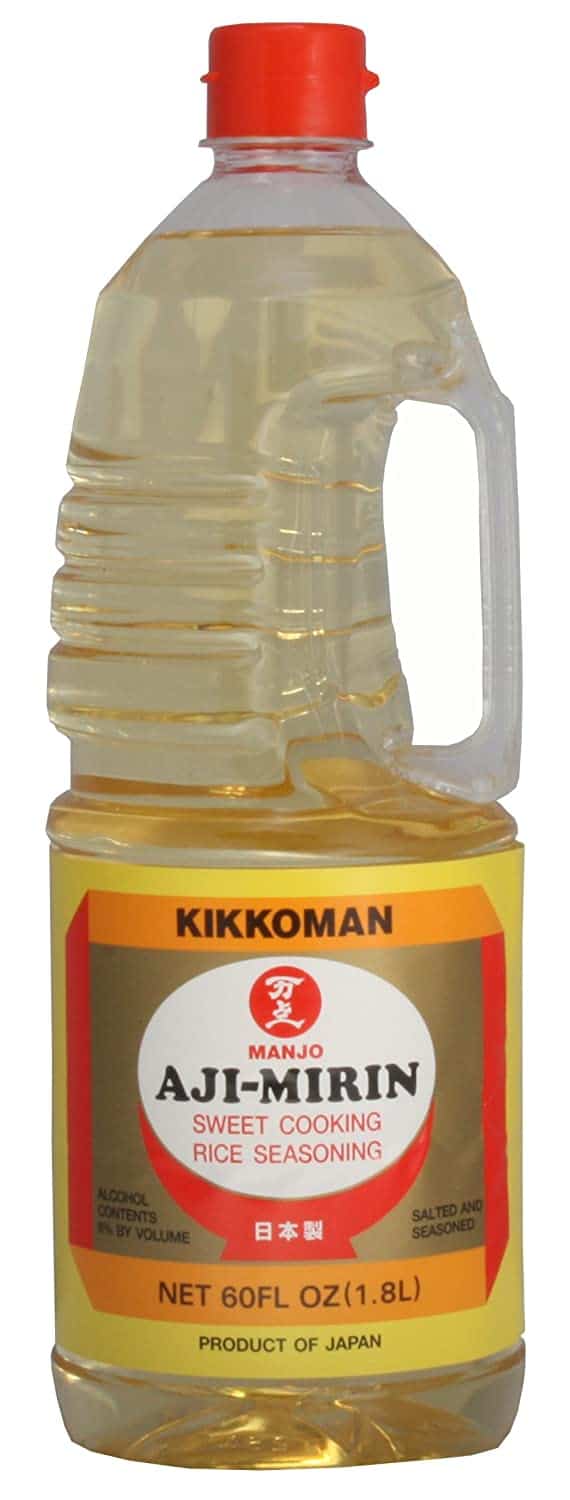
People always wonder ‘Can you substitute mirin for sake?’
If you’re cooking up a special Japanese dish, mirin won’t have the same taste as sake because it’s much sweeter and has a lower alcohol content.
I know that there’s a common misconception going around that mirin and sake are the same type of alcoholic drinks and can be used interchangeably for cooking but you need to know that they are different.
In fact, drinking sake, cooking sake, and mirin each have their own uses.
Mirin is used to make sweet dishes or foods with fish and seafood.
But if you don’t mind a bit of extra sweetness, you can definitely substitute mirin for sake. Generally, mirin is weaker than sake but it helps to remove the odor of strong ingredients like meat and fish.
It also absorbs into the food and makes it taste the same as if you’d add sake. Although it’s got more sugar, mirin is still one of the best substitutes.
Another advantage of adding mirin into your recipe is that it adds a tasty umami flavor. You can add the same amount of mirin as sake to your recipe.
If you like the sweeter substitutes, don’t hesitate to try Kikkoman Manjo Aji Mirin Cooking Rice Seasoning in your dishes.
6. Dry vermouth

Another good sake substitute may have been lurking in your liquor cabinet for a while now. Sherry and vermouth are both fortified wines made from grapes.
Dry vermouth is not commonly used in Japanese cuisine but there’s no reason not to use it to substitute sake.
But the best vermouth is dry white vermouth, not the red variety if you’re looking for a similar sake taste. Vermouth is also an alcoholic drink.
What makes it stand out is that it’s scented with botanicals.
Adding this to your recipe is just as likely to add a new dimension of flavor as it is to completely alter the flavor profile. It depends on how much of a difference you can handle.
Vermouth is really just a wine flavored with neutral alcohol and various herbs and spices. experts recommend adding about 2 tbsp of sugar into 1/2 cup of vermouth to make it more similar to the sake.
You can try the Martini & Rossi L’aperitivo Bitter EXTRA DRY which is dry vermouth but don’t forget to add the sugar.
7. Dry white wine

Dry white wine is made from white grapes that have been fermented. It is unique in that it contains less sugar than other similar products.
The sweetness of the sugar is evident in the wine though so dry white wine is a good substitute for sake. Just know that white wine is milder than sake.
Dry and sweet wines are distinguished by their sugar content. It’s a sweet wine if it has more than 30 grams of sugar. A dry wine has less than 10 grams of sugar added to it.
When substituting sake for white wine, the stronger the wine, the better. To make up for the lack of sweetness in dry white wine, you can always drop in a tbsp of sugar.
The good thing is that you can use the same amount of dry white wine as you would regular cooking sake.
Getting your hands on white wine is very easy since it’s readily available.
You can use a cheaper dry white wine when cooking like a Globerati Sauvignon Blanc. You can’t even really tell it’s not sake in your food.
8. White grape juice
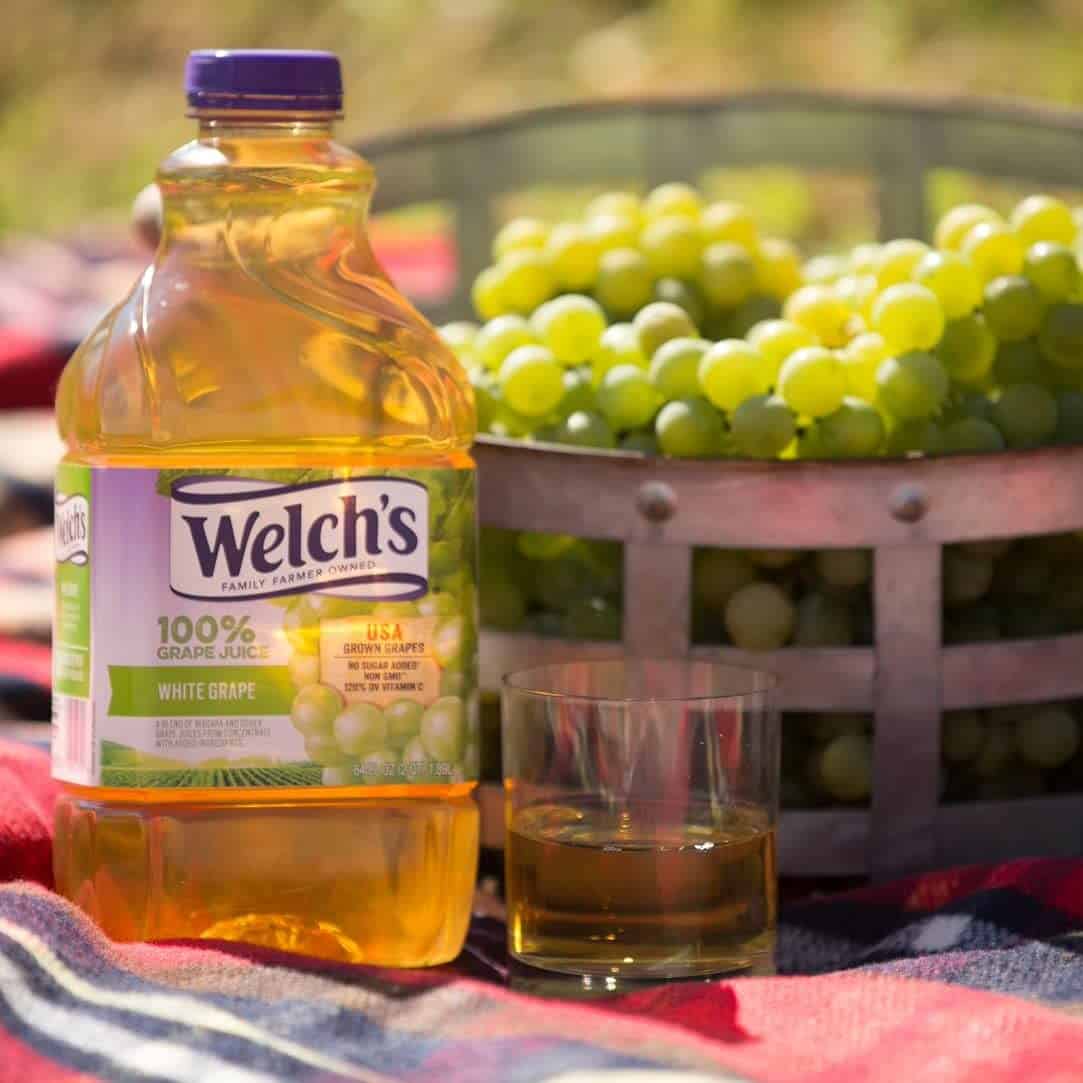
There are some great non-alcoholic alternatives for sake. These substitutes are cheap and easy to find. White grape juice is one of those drinks.
If you like fruity drinks, you may also like the taste of white grape juice.
White grape juice is an excellent substitute for sake because it’s healthy. If you’re cooking for kids, it’s a better replacement for alcoholic sake.
The juice contains vitamin C and it’s made from green-skinned grapes.
Be aware that using white grape juice when cooking doesn’t add lots of flavors and can even seem bland. That’s why it’s not the top choice.
It does, however, taste pretty sweet and fruity.
However, it’s a great option if you want to cook Asian cuisine without using any sake and want to avoid alcohol altogether.
You can use about the same amount of grape juice as sake but be prepared for a flavor change in your food. Sure the food will still taste delicious but it can lack that depth of flavor coming from the fermented rice.
After all, grapes are not the perfect replacement for fermented rice.
Welch’s 100% White Grape Juice is a good choice for a cooking wine and sake substitute.
9. Apple cider vinegar
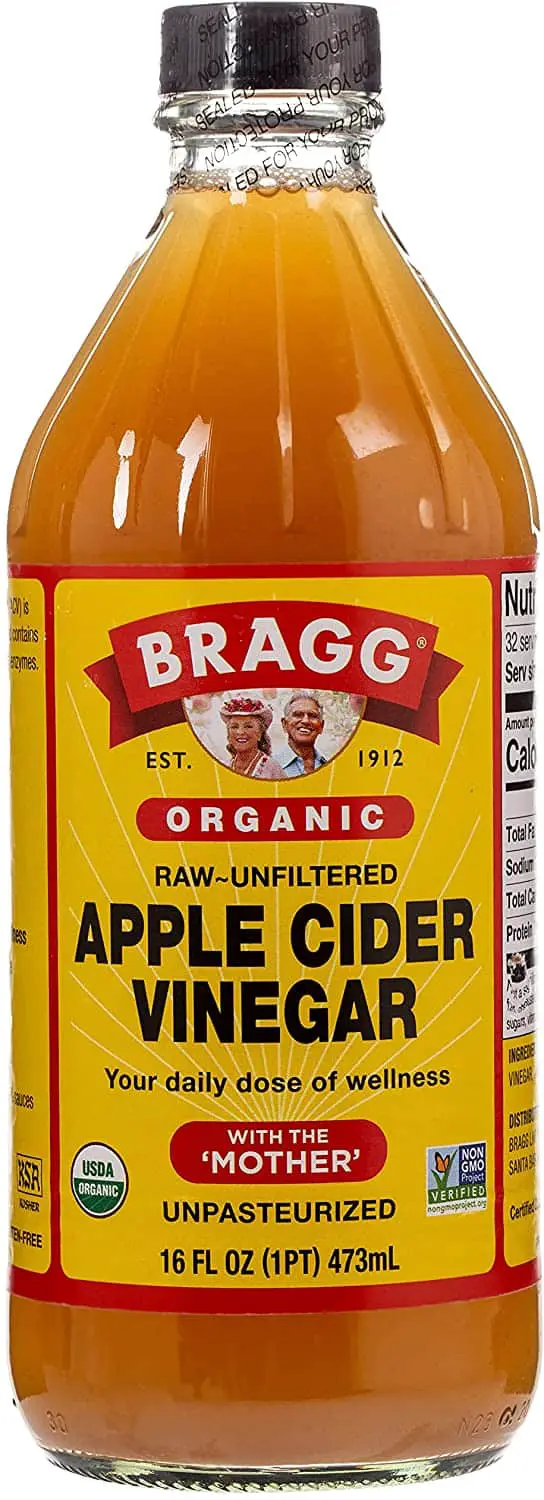
Apple cider vinegar is not one of my favorite substitutes for sake because the taste isn’t quite as similar as I’d like.
However, people always ask “Can you use apple cider vinegar instead of sake?” and the answer is, yes, if you have to.
Most would agree that apple cider vinegar, made from fermented apple juice is rather an unconventional substitute for sake. That’s because it doesn’t quite replicate the flavors and it’s a bit too sour and tangy.
However, if diluted in water, it can work because it’s a bit similar to rice vinegar. Also, this type of vinegar is known for its various health benefits.
When used as a sake substitute, the vinegar gives your food a bit of spice.
You can find Bragg Organic Apple Cider Vinegar on Amazon for a low price.
10. Balsamic vinegar
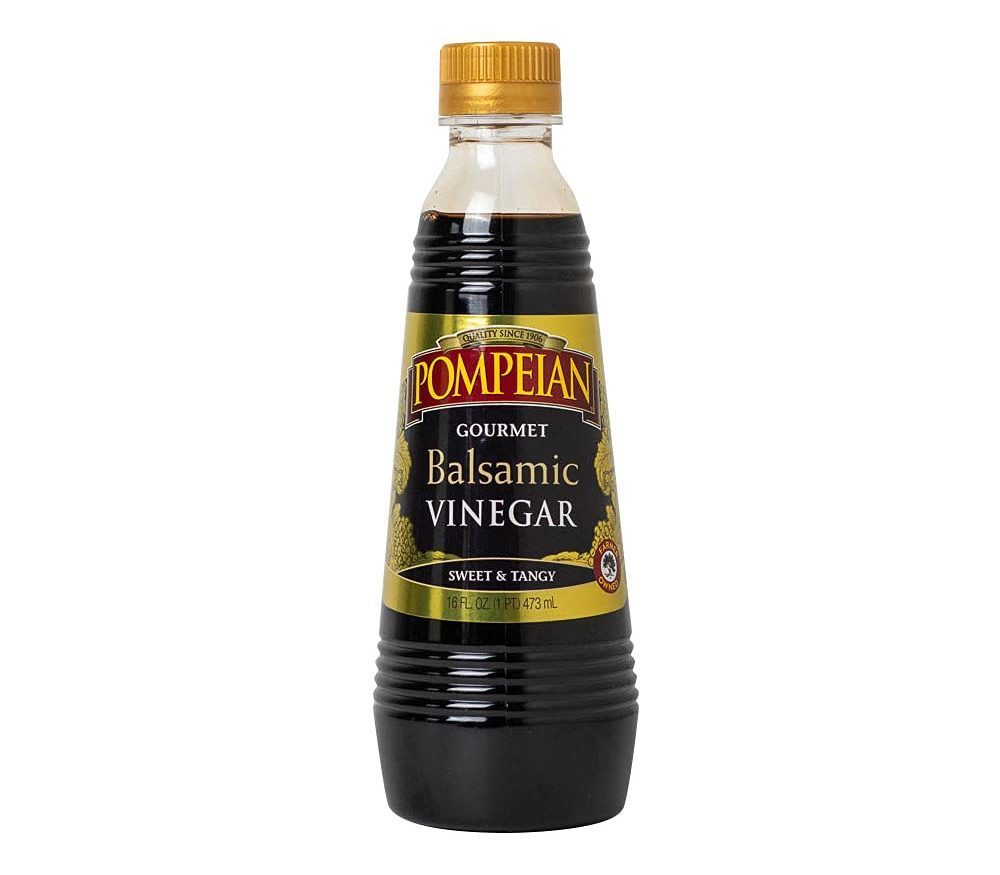
Another one of those ‘kind of similar but not quite there’ substitutes is the classic balsamic vinegar.
Balsamic vinegar is not a traditional Japanese ingredient so it’s not as popular as other sake substitutes.
You probably have balsamic vinegar in your pantry and use it to make salad dressings or use it in Italian recipes. Fortunately, it is a suitable substitute for sake if you’re out.
Balsamic vinegar is made from grape juice which is then aged in barrels for many years (up to 25!). The vinegar has a dark brown hue and a pretty sweet flavor but it’s quite acidic.
If you add it to a dish instead of sake, you’ll notice a pleasant umami flavor although a bit different from sake’s savory aromas.
You can add about the same amount of balsamic vinegar as sake. Use it for stews, rice dishes, seafood, and all kinds of meat marinades.
Pompeian Gourmet Balsamic Vinegar has great taste and is much cheaper than sake.
Takeaway
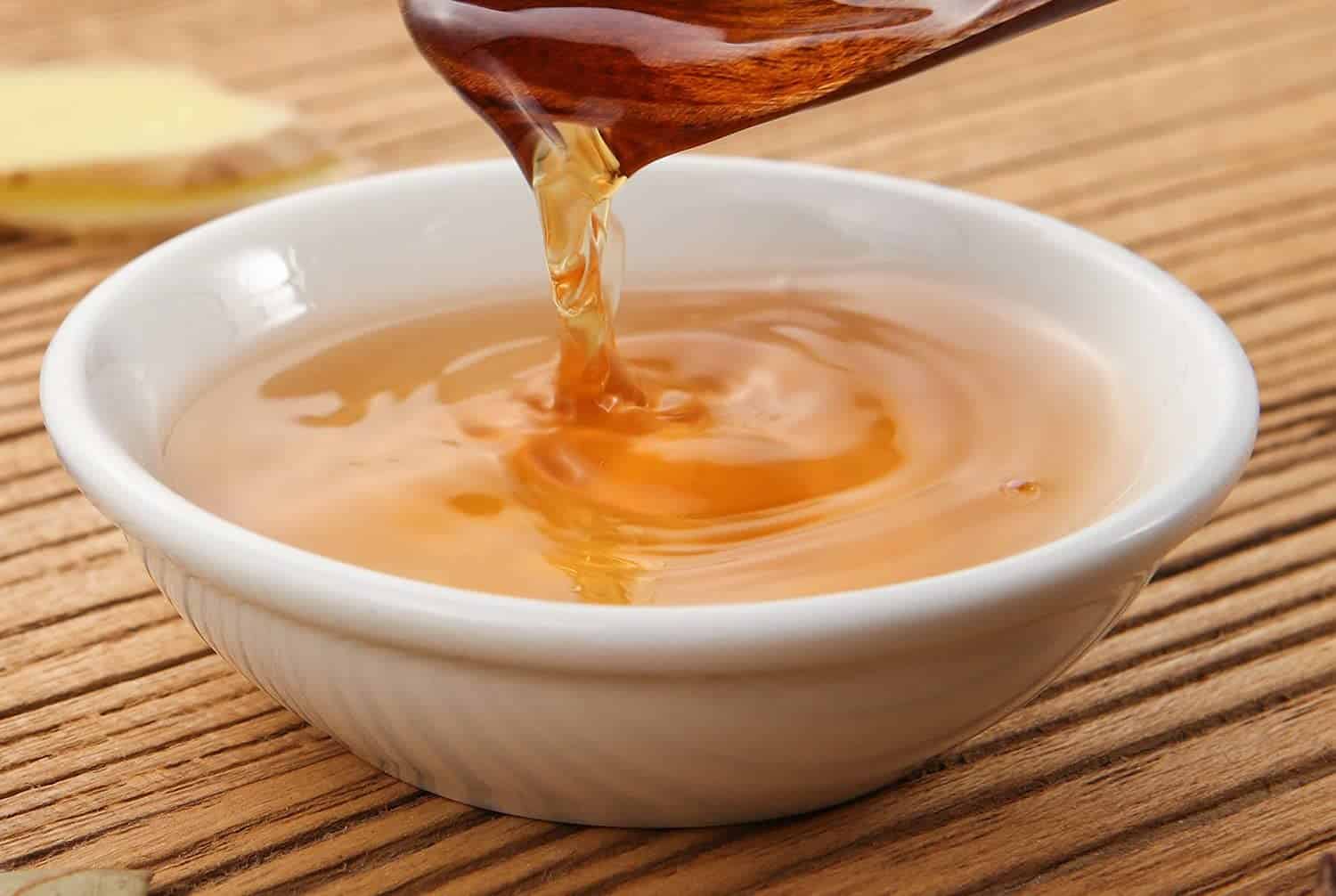
When cooking with sake, your dish takes on a savory and sweet flavor that takes it to another level.
Most cooks agree that Chinese cooking wine (Shaoxing wine) is probably the best replacement for sake. It works in most recipes and Chinese Shaoxing is so similar because it’s also made from fermented rice.
However, there are good non-alcoholic sake substitute options too like rice wine vinegar. Don’t worry so much about finding the best sake substitutes and instead explore which flavors work well together.
All the substitutes for sake on this list have similar flavor profiles so all are excellent choices.
Read next: The Ultimate Miso Paste and Five Easy Miso Substitutes
Check out our new cookbook
Bitemybun's family recipes with complete meal planner and recipe guide.
Try it out for free with Kindle Unlimited:
Read for freeJoost Nusselder, the founder of Bite My Bun is a content marketer, dad and loves trying out new food with Japanese food at the heart of his passion, and together with his team he's been creating in-depth blog articles since 2016 to help loyal readers with recipes and cooking tips.
